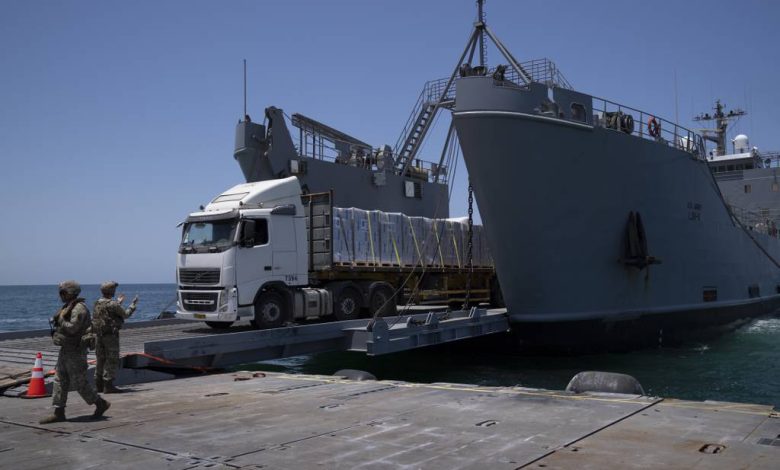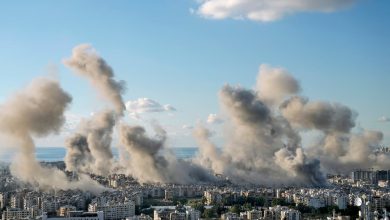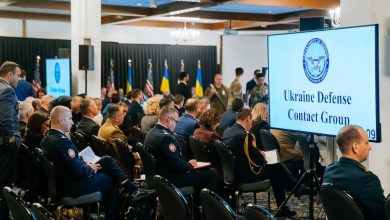US removes Gaza aid pier again due to weather and may not reinstall it

The pier built by the U.S. military to bring aid to Gaza has been removed due to weather to protect it, and the U.S. is considering not reinstalling it unless the aid begins flowing out into the population again, U.S. officials said Friday.
While the military has helped deliver desperately needed food through the pier, the vast majority of it is still sitting in the adjacent storage yard and that area is almost full. Aid agencies have had difficulty moving the food to areas further into Gaza where it is most needed because the humanitarian convoys have come under attack.
RELATED
The United Nations, which has the widest reach in delivering aid to starving Palestinians, ceased distributing food and other emergency supplies arriving through the pier June 9. The pause came after the Israeli military used an area near the pier to fly out hostages after their rescue in a raid that killed more than 270 Palestinians, prompting a U.N. security review over concerns that aid workers’ safety and neutrality may have compromised.
On Saturday, the U.N. said humanitarian workers had started moving tons of aid that piled up at the pier to warehouses in Gaza.
WFP spokesperson Abeer Etefa told The Associated Press this is a one-time operation until the beach is cleared of the aid and is being done to avoid spoilage. Further U.N. operations at the pier depend on security assessments, Etefa said.
While always meant to be temporary and never touted as a complete solution to the problems getting humanitarian aid into Gaza, President Joe Biden’s $230 million project has faced a series of setbacks since aid first rolled ashore May 17 and has been criticized by relief groups and congressional Republicans as a costly distraction.
The pier has been used to get more than 19.4 million pounds of food into Gaza, but has been stymied not only by aid pauses but unpredictable weather. Rough seas damaged the pier just days into its initial operations, forcing the military to remove it temporarily for repairs and then reinstall it. Heavy seas on Friday forced the military to remove it again and take it to the Israeli port at Ashdod.
Several U.S. officials, speaking on condition of anonymity to discuss military movements, said the military could reinstall the pier once the bad weather passes in the coming days, but the final decision on whether to reinstall it hasn’t been made.
Sabrina Singh, a Pentagon spokeswoman, acknowledged that she doesn’t know when the pier will be reinstalled.
“When the commander decides that it is the right time to reinstall that pier, we’ll keep you updated on that,” she said.
She also said Friday that there is a need for more aid to come into Cyprus and be transported to the pier. She noted that the secure area onshore is “pretty close to full,” but that the intention is still to get aid into Gaza by all means necessary. She said the U.S. is having discussions with the aid agencies about the distribution of the food.
But, she added, “Of course, if there’s not enough room in the marshaling yard, then it doesn’t make sense to put our men or women out there when there’s nothing to do.”
Palestinians are facing widespread hunger because fighting in the nearly nine-month Israel-Hamas war, Israeli restrictions on border crossings that are far more productive than the sea route and the attacks on the aid convoys have severely limited the flow of food, medicine and other supplies.
Ellen Knickmeyer contributed from Washington.
Editor’s note: Additional Associated Press reporting by Julia Frankel and Wafaa Shurafa contributed to this story.
Tara Copp is a Pentagon correspondent for the Associated Press. She was previously Pentagon bureau chief for Sightline Media Group.







